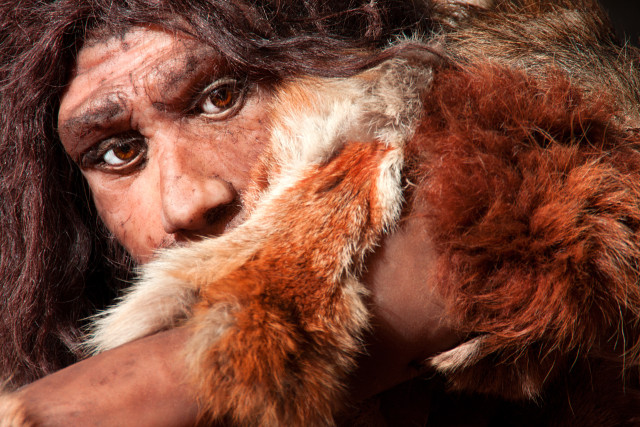
by Maddie Bender Thursday, November 29, 2018

Analyses of cave speleothems from Romania revealed periods of rapid climatic cooling in Eastern Europe about 44,000 and 40,000 years ago that, according to recent research, likely contributed to the decline of Neanderthals. Credit: shutterstock.com/Procy
Neanderthals disappeared from Europe roughly 40,000 years ago, and scientists are still trying to figure out why. Did disease, climate change or competition with modern humans — or maybe a combination of all three — do them in? In a recent study, researchers offer new evidence from Eastern Europe that climate change was a major player in the Neanderthals’ disappearance.
Our knowledge of Eastern Europe’s climate late in the Paleolithic has been informed largely by sediment cores from the Black Sea. However, it’s not clear that these marine records accurately represent conditions on land at the time, says Michael Staubwasser, a geochemist at the University of Cologne in Germany and lead author of the new study, published in Proceedings of the National Academy of Sciences (PNAS).
To study Eastern Europe’s paleoclimate in more detail, Staubwasser and his colleagues analyzed cave deposits called speleothems from two caves in the Carpathian Mountains of Romania. Ratios of carbon and oxygen isotopes preserved in successive layers of the speleothems offer records of regional temperatures and precipitation during the Paleolithic.
The team identified two periods of cooling resulting in temperature drops of 1 to 1.5 degrees Celsius each about 44,000 and 40,000 years ago. The timing of these cooling periods matched with long absences of Neanderthal tools in the archaeological record. Based on these so-called sterile layers, the researchers suggested that the cold might have caused the Neanderthals’ disappearance from Europe.
Initially, the researchers found, the story told by the cave data “didn’t fit so well with the marine record,” Staubwasser says. “Only when we realized that the [speleothem] record actually fit the archaeological record did the story become reality.”
In the study, Staubwasser’s team noted that past research showed that cooler, drier climates early in the late Paleolithic contributed to shifts from forest-dominated to grassland-dominated biomes across Central and Western Europe, with attendant decreases in large animal populations. Neanderthals, who subsisted mainly on meat, may have faced difficulty adapting to environments with less big game, whereas omnivorous humans were better-suited for the conditions.
But this doesn’t necessarily mean humans outcompeted Neanderthals — on the contrary, there is only limited archaeological evidence suggesting the two species interacted much, although fossil evidence indicating interbreeding has been found, according to Staubwasser. The question of why the Neanderthals died out has been asked for centuries, Staubwasser says. “People long thought, ‘Oh, it must be the more evolved brains of modern humans being superior to Neanderthals and they just outcompeted them,’ but that doesn’t seem to be the case,” he says, adding that mounting evidence in the past decade suggests Neanderthals were quite intellectually capable.
One of the study’s most interesting findings is the sheer speed at which the climate was changing in the middle to late Paleolithic, says Richard Klein, an anthropologist at Stanford University who was not involved in the research but who edited the study for PNAS. Such rapid changes raise questions about how humans and Neanderthals were able — or unable — to cope with that kind of fluctuation over short time intervals, he says.
Klein disagrees, however, that climate change could have been fully culpable for the Neanderthals’ demise. Diseases transmitted by humans may have played a role, and direct competition could have as well — a possibility that, although not well-supported by the archaeological record, has been predicted in multiple models. The new study, Klein says, is “not conclusive by any means, but suggestive” that climate change also played a role in the Neanderthals’ disappearance.
© 2008-2021. All rights reserved. Any copying, redistribution or retransmission of any of the contents of this service without the expressed written permission of the American Geosciences Institute is expressly prohibited. Click here for all copyright requests.